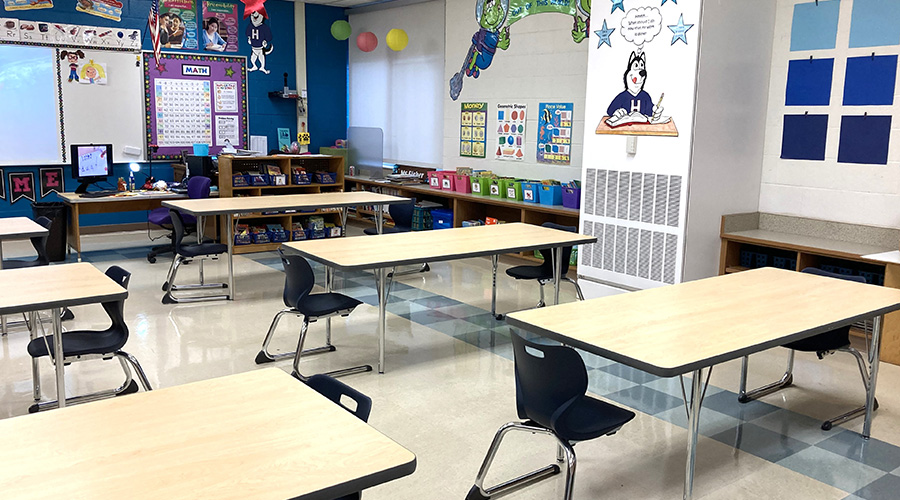
Livonia Public Schools Upgrade HVAC Systems with Airedale Solutions
All district schools and administrative buildings were updated with new HVAC equipment. August 2, 2024
When Harry Lau, administrator for facilities and operations for the Livonia Public Schools, joined the district in 2013, he identified a significant need to improve the HVAC equipment throughout the entire school system. All 25 buildings, including schools and administration offices, had significant inefficiencies with their HVAC systems.
The infrastructure was outdated and the horizontal unit ventilators that were in use were from the 1950s and 60s and were well beyond their life expectancy. The old units were prone to freezing, and there were control issues that further exacerbated the problem. Poor indoor air quality (IAQ) and inefficient temperature controls led to discomfort among staff and students, impacting the overall learning environment.
His primary goal was to reduce the number of environmental air quality concerns, reduce district utility and maintenance costs and improve the overall comfort and air quality throughout the system.
To address these issues, Livonia Public Schools secured funds through a successful bond measure. There were multiple contractors and manufacturers involved for the entire system upgrade, but for the classrooms specifically, the district chose to upgrade to Airedale by Modine Classmate vertical units. Looking at the specifications of these units, Harry was certain the Classmate would meet their needs.
The previous units had structural and design issues that led to multiple repairs, and Harry knew that they would have fewer maintenance issues with the Classmate because of the way they are designed. They also chose to modernize control of the system by implementing a building management system allowing for real-time monitoring and centralized management of the HVAC systems across all buildings.
The HVAC system upgrades have resulted in dramatic improvements in IAQ and energy efficiency. The new systems have provided better temperature control, faster cooling and heating, and have reduced energy consumption by 20 percent. The upgraded systems also led to a quieter environment, enhancing the learning experience.
The ability to monitor and manage the HVAC systems in real-time has allowed for proactive maintenance and further cost savings. Harry said he wanted the classroom instructors to have some anonymity with temperature control. While the set points follow ASHRAE recommendations, the units are equipped to give the teachers some control to bump the temperature up or down a few degrees to suit their comfort level and those of the students.
“With partners like Modine, they opened our eyes on ways of doing things,” Harry says. “It has been refreshing to actually be heard by the professionals.”
Because of their commitment to improving IAQ and energy efficiency, Livonia Public Schools has been recognized by the U.S. Department of Energy’s Efficient and Healthy Schools Program. This program recognizes and assists school districts seeking to implement high impact indoor air quality and efficiency improvements. They were honored for optimizing their operations to improve building performance. The district was also recognized by their city as a green energy partner.
Harry said the classroom learning environments have been dramatically updated and have seen a significant improvement. The consistent modulation of the fresh air has been greatly noticed.
A huge point of pride for the district was being able to confidently inform their staff and parents that they were ahead of the curve on ensuring quality indoor air once students and staff were able to return to indoor classroom learning during the COVID-19 pandemic.
Livonia Public Schools’ proactive approach and successful implementation of HVAC upgrades have set a benchmark for other districts aiming to improve their learning environments through better air quality and energy efficiency.
Next
Read next on FacilitiesNet












